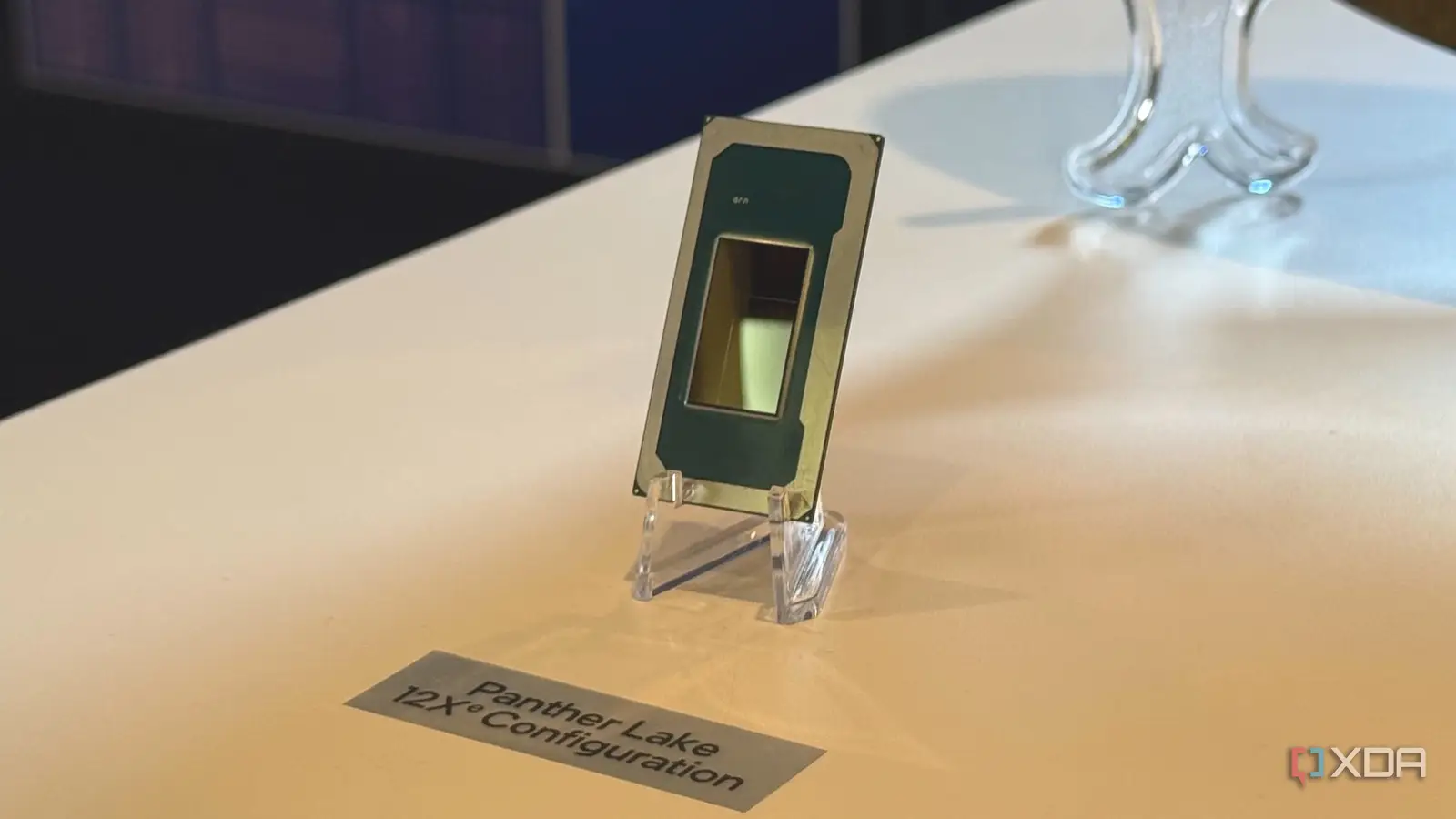
The first of Intel’s upcoming Xe3 GPUs isn’t a Celestial graphics card or even an integrated chip on the Nova Lake desktop CPU. Intel’s first Xe3 GPU is the integrated GPU tile on the Panther Lake platform. Combining the Xe3 architecture, XeSS 3 technology improvements, and new ray-tracing cores, Panther Lake could be a sleeper hit for gaming on light and thin devices, including potential handheld gaming PCs.
Intel has been quietly killing it with integrated graphics over the last few generations, with Lunar Lake and Arrow Lake having strong iGPU gaming performance. And it looks like that trend will continue based on what we know about the Panther Lake platform so far.
About this article: Intel paid for my accommodation and travel to the Intel Tech Tour. The company provided pre-briefings and documentation ahead of the official announcement, but did not have any input or oversight on this article.
What’s new with Xe3 Graphics?
iGPU architecture has rarely been so fascinating
Intel’s Xe3 graphics technology will first feature on the Panther Lake platform, where it will be rolled under the Arc B-series umbrella. However, it is a newer graphics architecture than the Arc B-series discrete GPUs despite having the same name. The Arc C-series will release with the Celestial discrete graphics later in 2026 and will be built on an Xe3P architecture. Like previous generations, the Panther Lake Xe3 iGPU is separated from the compute tile to offer better scaling for larger configurations.
Where Intel has made notable changes is by optimizing throughput. The new architecture offers up to six Xe-cores per render slice, for up to 12 Xe-cores on the top-end configuration. The Panther Lake 8-core configuration offers four Xe cores, while the 16-core configuration offers either four Xe cores or aforementioned 12 Xe cores. As Intel’s Tom Petersen explained, the 12 Xe-core iGPU variant is the “biggest GPU we’ve ever built for integrated.”
Intel also increased the size of the L2 cache on the integrated graphics tile to 16MB for Panther Lake, and even reduced the traffic that hits the memory interface by as much as 36%. We’ve seen some impressive moves by the company with its discrete offerings, so it’s good to see similar improvements applied to its integrated solutions. Each Xe3 GPU core features eight 512-bit vector engines and eight 2048-bit XMX engines, with 33% more shared L1 cache.
This means the GPU is great for not only gaming, but also AI workloads and other intensive tasks. Speaking of which, the Xe3 architecture on Panther Lake offers up to 120 TOPS for AI performance and supports TF32, FP16, BF16, FP8, INT8, INT4, and INT2 formats. Most AI workloads are not done at INT2 or INT4 precision, though, so this number will be considerably reduced in real-world usage. Intel is also advertising a 180 platform TOPS.
As for ray tracing, Intel has enhanced the ray tracing units on each Xe3 core with dynamic ray management for asynchronous ray tracing. Xe3 also brings enhanced graphics, fixed reduction, up to 2x anisotropic filtering, and up to 2x stencil test rate compared to Xe2. Simply put, this is one powerful integrated GPU for mobile gaming.
Xe3 Graphics performance improvements
How does it compare to Xe2?
Keeping to the same integrated graphics segment, Xe3 offers up to 50% better performance than Xe2 when comparing the Panther Lake Xe3 architecture to Lunar Lake’s Xe2 platform. Xe3 is also more efficient, offering 40% better performance per watt compared to the previous generation. This makes Xe3 ideal for a gaming handheld, though neither Intel nor its partners have yet disclosed plans for upcoming handheld gaming PCs.
As expected, Xe3 offers support for the full Windows graphics architecture, including the DirectX Cooperative Vector for Microsoft’s DirectX 12 Ultimate API. The GPU also utilizes a Neural Radiance Field to replace the render pipeline with a per-pixel AI system. Combined with Intel’s new XeSS 3 super sampling optimizations and multi-frame generation up to 4x generated frames, Xe3 is expected to offer some serious graphics power even on an integrated chipset.
Is Xe3 built for AI or gaming?
Or both?
Thanks to modern gaming technologies like super sampling and multi-frame generation, gaming and AI are hardly separate workloads. While you may not need super sampling if you’re running a powerful discrete GPU on a desktop, on a thin and light laptop, or handheld gaming PC, utilizing technologies like DLSS, FSR, or XeSS and frame generation just makes sense. Integrated graphics are getting better than ever, but modern games are designed for massive, beefy discrete graphics cards.
So if you want to play the latest titles at 60 FPS on 1080p, most iGPUs are optimized to get you there on low or medium graphics settings. If you want better graphics fidelity or a higher resolution, you’re going to need some kind of AI tool to help even out performance and smooth your gaming experience. Which is where Intel’s XeSS 3 comes in. While Panther Lake and the Xe3 iGPU are clearly designed to handle large language model AI, there’s also a clear investment in gaming technology on the platform.
After all, the world is still figuring out the best uses of on-device and cloud-based AI. However, gaming is one segment where Intel seems to be locked in for Panther Lake. When asked about Intel’s integrated graphics compared to the iGPUs AMD has been putting in the Ryzen Z2 series APUs, Petersen responded, “Intel believes we have an ability to compete with graphics technology,” but the company hasn’t announced any Xe3 handheld plans yet.